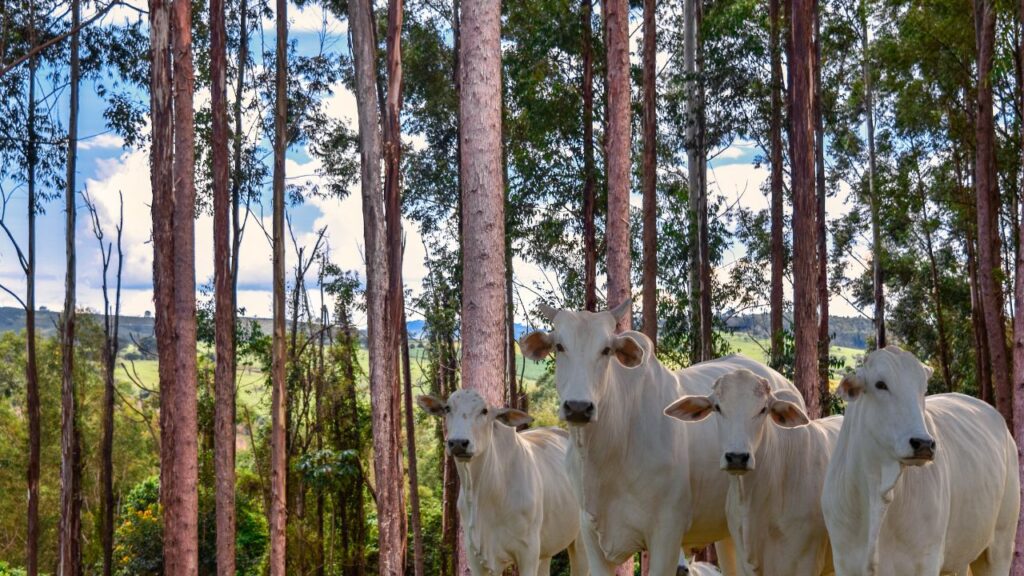Jaqueline de Cássia de Oliveira a , Igor Costa de Freitas a , Ana Clara Santos Duarte a , João Gabriel Figueiredo Moreira a , Alex José Silva Couto a , Marcos Fernando Gonçalves Lessa a , Miguel Marques Gontijo Neto b , Márcia Vitória Santos c , Mauricio Roberto Cherubin d , Carlos Eduardo Pellegrino Cerri d , Leidivan Almeida Frazão a 1
- aInstituto de Ciências Agrárias, Universidade Federal de Minas Gerais, Av. Universitária 1000, Montes Claros, MG 39400-090, Brazil
- bEmpresa Brasileira de Pesquisa Agropecuária, Embrapa Milho e Sorgo, Rodovia MG 424 km 45, Sete Lagoas, MG 35701-970, Brazil
- cUniversidade Federal dos Vales do Jequitinhonha e Mucuri, Rod. MGT 367 km 583, Diamantina, MG 39100-000, Brazil
- dCentro de Estudos de Carbono em Agricultura Tropical (CCARBON), Universidade de São Paulo, Avenida Pádua Dias 11, Piracicaba, SP 13418-900, Brazil
Highlights
- Principal component analysis explained over 86 % of variance in soil physicochemical attributes across both study sites.
- Soil C and N stocks decreased with depth, but deep-rooted species in ASPS enhanced subsoil C and N accumulation.
- Well-managed ASPS matched or exceeded NV in term of soil C and N stocks, highlighting their C sequestration potential.
- Long-term management and tree maturity were key to maximizing the benefits of integrated systems in the Brazilian Cerrado.
Abstract
The increase in the global demand for food, energy and fibre, together with the need to adapt to or mitigate climate change, has intensified the search for agricultural production systems that minimise environmental impact and increase productivity. Our aim was to compare the soil C and N levels and stocks and soil fertility in areas of pasture monoculture and agrosilvopastoral systems under different arrangements in two experiments located in the State of Minas Gerais, Brazil. Both experiments were conducted in the districts of Curvelo and Sete Lagoas in Minas Gerais. In each experiment, agrosilvopastoral systems, pasture and native vegetation (NV) were evaluated, the latter being used as a reference for the original state of the soil. In order to ensure the representativeness of the sample within the agrosilvopastoral systems (ASPS), sampling was carried out at three points, covering the tree, forage and/or grain components. The soil was sampled in the 0–5, 5–10, 10–20, 20–30, 30–40, 40–50, 50–60, 60–70, 70–80, 80–90 and 90–100 cm layers, to evaluate the density (Ds), chemical attributes, and the levels and stocks of C and N. In Curvelo, the agrosilvopastoral system (SASP) increased soil pH, base saturation (V), cation exchange capacity (CEC), and soil organic carbon (SOC) compared to degraded pastures. SOC contents in SASP ranged from 29.1 g kg⁻¹ (0–5 cm) to 7.6 g kg⁻¹ (90–100 cm), with no significant differences among sampling positions (P1, P2, P3). In Sete Lagoas, SOC contents ranged from 51.6 g kg⁻¹ (0–5 cm) to 18.9 g kg⁻¹ (90–100 cm) depending on system age and sampling location. Total SOC stocks in managed pasture (PM) and SASP1 (13 years) were higher than native vegetation (NV), reaching up to 133.4 Mg ha⁻¹ (0–50 cm) and 16.0 Mg ha⁻¹ for nitrogen. SASP improved soil fertility and reduced exchangeable Al compared to native vegetation and degraded pastures. The results demonstrate that the adoption of agroforestry-pastoral systems can be an effective strategy to restore soil fertility and increase carbon sequestration in degraded pasture areas in the Cerrado, contributing to climate change mitigation and the sustainability of agricultural production. However, agronomic and environmental gains depend on the continuous management of these systems. Investments in technical training, policies that promote low-carbon agriculture (such as the ABC+ Plan), and the monitoring of soil indicators are essential to ensure long-term benefits.
Keywords
Climate change, Soil quality, Agroforestry systems, Land use





